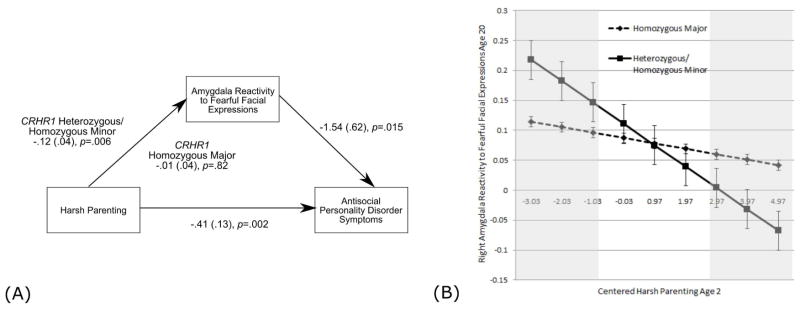Figure 3. CRHR1 genotype moderates the relationship between harsh parenting and amygdala reactivity to fearful facial expressions.
(A) Path model indicates that only among individuals who are heterozygous or homozygous minor at both CRHR1 SNPs is parenting at age 2 related to right amygdala reactivity to fearful faces at age 20. Covariates include child race, toddler externalizing symptoms, neighborhood deprivation, maternal education, family income, and maternal depression symptoms at age 2, and at age 20, symptoms of SUD, AUD, and PTSD. Paths are marked with unstandardized coefficients. Moderation was tested by comparing model fit (X2) of the baseline model (see Supplement) to a model where harsh parenting to amygdala reactivity was allowed to vary across genotype groups, ΔX2=3.88, df=1, p=.04 (indicating significant moderation). In addition, we report a an indirect effect for individuals who are heterozygous or homozygous minor, but no indirect effect for those who were homozygous major, from harsh parenting to amygdala reactivity to Antisocial Personality Disorder symptoms (αβ =.12, p=.042; bootstrapped 95% CI = .01 to .70). The path model demonstrated good fit, X2 = 61.43 (61) p=.47, CFI = 1.00, RMSEA = .10 CI (.00 to .06), SRMR=.06. (B) Predicted values of amygdala reactivity to right fearful facial expressions at each value of harsh parenting for individuals who are homozygous major (n=89) versus heterozygous or homozygous minor (n=125) at both CRHR1 SNPs. The plotted points were calculated using unstandardized beta estimates from a regression model using a continuous interaction term to test moderation by genotype (see Supplement). The shaded gray boxes indicate regions where the standard errors of each plotted point for each genotype group do not overlap (i.e., regions where the expected values of amygdala reactivity are significantly different by genotype group). Thus, this figure depicts a pattern of differential susceptibility to harsh parenting, where heterozygotes and individuals who are homozygous minor at both CRHR1 SNPs show lower amygdala reactivity in the context of high harshness but greater amygdala reactivity in the context of low harshness, with respect to the other genotype group.

